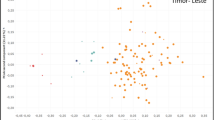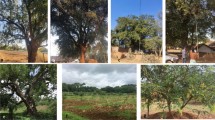Abstract
The Oriental fruit fly, Bactrocera dorsalis sensu stricto, is one of the most economically destructive pests of fruits and vegetables especially in East Asia. Based on its phytophagous life style, this species dispersed with the diffusion and implementation of agriculture, while globalization allowed it to establish adventive populations in different tropical and subtropical areas of the world. We used nine SSR loci over twelve samples collected across East Asia, i.e. an area that, in relatively few years, has become a theatre of intensive agriculture and a lively fruit trade. Our aim is to disentangle the different forces that have affected the invasion pattern and shaped the genetic make-up of populations of this fruit fly. Our data suggest that the considered samples probably represent well established populations in terms of genetic variability and population structuring. The human influence on the genetic shape of populations and diffusion is evident, but factors such as breeding/habitat size and life history traits of the species may have determined the post introduction phases and expansion. In East Asia the origin of diffusion can most probably be allocated in the oriental coastal provinces of China, from where this fruit fly spread into Southeast Asia. The spread of this species deserves attention for the development and implementation of risk assessment and control measures.






Similar content being viewed by others
References
Aketarawong N, Bonizzoni M, Malacrida AR, Gasperi G, Thanaphum S (2006) Seventeen novel microsatellite markers from an enriched library of the pest species Bactrocera dorsalis sensu stricto. Mol Ecol Notes 6:1138–1140
Aketarawong N, Bonizzoni M, Thanaphum S, Gomulski LM, Gasperi G, Malacrida AR, Gugliemino CR (2007) Inference on the population structure and colonization process of the invasive oriental fruit fly, Bactrocera dorsalis (Hendel). Mol Ecol 16:3522–3532
Australia Biosecurity (2009) Report of the assessment of northern China’s fruitfly pest free areas: Hebei, Shandong and Xinjiang. Biosecurity Australia, Canberra
Baruffi L, Damiani G, Guglielmino CR, Bandi C, Malacrida AR, Gasperi G (1995) Polymorphism within and between populations of Ceratitis capitata: comparison between RAPD and multilocus enzyme electrophoresis data. Heredity 74:425–437
Bowcock AM, Ruiz-Linares A, Tomfohrde J, Minch E, Kidd JR, Cavalli-Sforza LL (1994) High resolution of human evolutionary trees with polymorphic microsatellites. Nature 368:455–457
Brookfield JFY (1996) A simple new method for estimating null allele frequency from heterozygote deficiency. Mol Ecol 5:453–455
Clarke AR, Armstrong KF, Carmichael AE, Milne JR, Raghu S, Roderick GK, Yeates DK (2005) Invasive phytophagous pests arising through a recent tropical evolutionary radiation: the Bactrocera dorsalis complex of fruit flies. Annu Rev Entomol 50:293–319
Cornuet JM, Ravigné V, Estoup A (2010) Inference on population history and model checking using DNA sequence and microsatellite data with the software DIYABC (v1.0). BMC Bioinform 11:401
Cornuet JM, Pudlo P, Veyssier J, Dehne-Garcia A, Gautier M, Leblois R et al. (2014) DIYABC v2.0: a software to make approximate Bayesian computation inferences about populations history using single nucleotide polymorphism, DNA sequence and microsatellite data. Bioinformatics 1–3. doi:10.1093/bioinformatics/btt1763
Diaz-Fleischer F, Papaj DR, Prokopy RJ, Norrbom AL, Aluja M (1999) Evolution of fruit fly oviposition behavior. In: Aluja M, Norrbom AL (eds) Fruit flies (Tephritidae): phylogeny and evolution of behavior. CRC Press, Boca Ranton, pp 811–842
Dieringer D, Schlötterer C (2003) Microsatellite analyzer (MSA): a platform independent analysis tool for large microsatellite data sets. Mol Ecol Notes 3:167–169
Drew RAI, Hancock DL (1994) The Bactrocera dorsalis complex of fruit flies (Diptera: Tephritidae: Dacinae) in Asia. Bull Entomol Res Suppl 2:1–68
Drew RAI, Raghu S, Halcoop P (2008) Bridging the morphological and biological species concepts: studies on the Bactrocera dorsalis (Hendel) complex (Diptera: Tephritidae: Dacinae) in South-East Asia. Biol J Linn Soc 93:217–226
Duyck PF, David P, Quilici S (2004) A review of relationships between interspecific competition and invasions in fruit flies (Diptera: Tephritidae). Ecol Entomol 29:511–520
Evanno G, Regnaut S, Goudet J (2005) Detecting the number of clusters of individuals using the software Structure: a simulation study. Mol Ecol 14:74–75
Excoffier L, Laval G, Schneider S (2005) Arlequin (version 3.0): An integrated software package for population genetics data analysis. Evol Bioinform Online 1:47–50
Falush D, Stephens M, Pritchard JK (2003) Inference of population structure using multilocus genotype data: linked loci and correlated allele frequencies. Genetics 164:1567–1578
Falush D, Stephens M, Pritchard JK (2007) Inference of population structure using multilocus genotype data: dominant markers and null alleles. Mol Ecol Notes 7:574–578
Felsenstein J (2005) PHYLIP (Phylogeny Inference Package) version 3.6. Distributed by the author. Department of Genome Sciences, University of Washington, Seattle
Fletcher BS (1989) Movements of tephritid fruitflies. In: Robinson AS, Hooper G (eds) Fruit flies: their biology, natural enemies and control, vol 3B., Elsevier ScienceAmsterdam, The Netherlands, pp 209–219
Goudet J (2001) FSTAT, a program to estimate and test gene diversities and fixation indices (version 2.9.3). Available from http://www2.unil.ch/popgen/softwares/fstat.htm.
Hardy DE (1973) The fruit flies (Tephritidae-Diptera) of Thailand and bordering countries. Pac Insects Monogr 31:1–353
Hendrichs J, Kenmore P, Robinson AS, Vreysen MJB (2007) Area-wide integrated pest management (AW-IPM): principle, practice and prospects. In: Vreysen MJB, Hendrichs J, Robinson AS (eds) Area-wide control of insect pests: from research to field implementation. Springer, Dordrecht, pp 3–33
Jin T, Zeng L, Lin Y, Lu Y, Liang G (2011) Insecticide resistance of the oriental fruit fly, Bactrocera dorsalis (Hendel) (Diptera: Tephritidae), in mainland China. Pest Manag Sci 67:370–376
Khamis FM, Karam N, Ekesi S, De Meyer M, Bonomi A, Gomulski LM, Scolari F, Gabrieli P, Siciliano P, Masiga D, Kenya EU, Gasperi G, Malacrida AR, Guglielmino CR (2009) Uncovering the tracks of a recent and rapid invasion: the case of the fruit fly pest Bactrocera invadens (Diptera: Tephritidae) in Africa. Mol Ecol 18:4798–4810
Krosch MN, Schutze MK, Armstrong KF, Boontop Y, Boykin LM, Chapman TA, Englezou A, Cameron SL, Clarke AR (2012) Piecing together an integrative taxonomic puzzle: microsatellite, wing shape and aedeagus length analyses of Bactrocera dorsalis s.l. (Diptera: Tephritidae) find no evidence of multiple lineages in a proposed contact zone along the Thai/Malay Peninsula. Syst Entomol 38:2–13
Li KW (2009) China’s total factor productivity estimates by region, investment sources and ownership. Econ Syst 33:213–230
Li Y, Wu Y, Chen H, Wu J, Li Z (2012) Population structure and colonization of Bactrocera dorsalis (Diptera: Tephritidae) in China, inferred from mtDNA COI sequences. J Appl Entomol 136:241–251
Liu JH, Xiong X, Pan Y, Xiong Z, Deng Z, Yang L (2011) Predicting potential distribution of oriental fruit fly, Bactrocera dorsalis in Jiangxi Province, South China based on maximum entropy model. Sci Res Assays 6:2888–2894
Malacrida AR, Gomulski LM, Bonizzoni M, Bertin S, Gasperi G, Guglielmino CR (2007) Globalization and fruitfly invasion and expansion: the medfly paradigm. Genetica 131:1–9
Matschiner M, Salzburger W (2009) TANDEM: integrating automated allele binning into genetics and genomics workflows. Bioinformatics 25:1982–1983
Nei M, Tajima F, Tateno Y (1983) Accuracy of estimated phylogenetic tree from molecular data. J Mol Evol 19:153–170
Paetkau D, Slade R, Burden M, Estoup A (2004) Genetic assignment methods for the direct, real time estimation of migration rate: a simulation-based exploration of accuracy and power. Mol Ecol 13:55–65
Peakall R, Smouse PE (2005) GENALEX 6: genetic analysis in Excel. Population genetic software for teaching and research. Mol Ecol Notes 6:288–295
Piry S, Alapetite A, Cornuet JM, Paetkau D, Baudouin L, Estoup A (2004) GeneClass2: a software for genetic assignment and first-generation migrant detection. J Hered 95:536–539
Pritchard JK, Stephens M, Donnelly P (2000) Inference of population structure using multilocus genotypic data. Genetics 155:945–959
Rannala B, Mountain JL (1997) Detecting immigration by using multilocus genotypes. Proc Natl Acad Sci USA 94:9197–9221
Rice WR (1989) Analysis tables of statistical tests. Evolution 43:223–225
Rohlf FJ (2005) NTSYSpc numerical taxonomy and multivariate analysis system, Version 2.1. Exeter Software, Applied Biostatistics Inc., New York, USA
Rousset F (2008) Genepop’007: a complete re-implementation of the GENEPOP software for Windows and Linux. Mol Ecol Notes 4:137–138
Schutze MK, Krosch MN, Armstrong KF, Chapman TA, Englezou A, Chomic A, Cameron SL, Hailstones D, Clarke AR (2012) Population structure of Bactrocera dorsalis s. s., B. papayae and B. philippinensis (Diptera: Tephritidae) in southeast Asia: evidence for a single species hypothesis using mitochondrial DNA and wing-shape data. BMC Evol Biol 12:130
Shi W, Kerdelhuè C, Ye H (2005) Population genetics of the Oriental fruitfly, Bactrocera dorsalis (Diptera Tephritidae), in Yunnan (China) based on mitochondrial DNA sequences. Environ Entomol 34:977–983
Shi W, Kerdelhué C, Ye H (2012) Genetic structure and inferences on potential source areas for Bactrocera dorsalis (Hendel) based on mitochondrial and microsatellite markers. PLoS ONE 7:e37083
Stephens AE, Kriticos DJ, Leriche A (2007) The current and future potential geographic distribution of the oriental fruit fly Bactrocera dorsalis (Diptera Tephritidae). Bull Entomol Res 97:369–378
Virgilio M, Delatte H, Backeljau T, De Meyer M (2010) Macrogeographic population structuring in the cosmopolitan agriculture pest Bactrocera cucurbitae (Diptera: Tephritidae). Mol Ecol 19:2713–2724
Wan XW, Nardi F, Zhang B, Liu YH (2011) The oriental fruit fly, Bactrocera dorsalis, in China: origin and gradual inland range expansion associated with population growth. PLoS ONE 6:e25238
Wan X, Liu Y, Zhang B (2012) Invasion history of the oriental fruit fly, Bactrocera dorsalis, in the Pacific-Asia region: two main invasion routes. PLoS ONE 7:e36176
Wang X (1996) The fruit flies (Diptera: Tephritidae) of the East Asian Region. Acta Zootaxonomica Sinica 21:49–54 [In Chinese]
Weir BS, Cockerham CC (1984) Estimating F-statistics for the analysis of population structure. Evolution 38:1358–1370
White IM, Elson-Harris MM (1992) Fruit flies of economic significance: their identification and bionomics. Redwood Press Ltd., Melksham
Xie YZ (1937) Study on the Trypetidae or fruit-flies of China. Sinenia 2:103–226
Ye H, Liu JH (2005) Population dynamics of oriental fruit fly, Bactrocera dorsalis (Diptera: Tephritidae), in the Kunming area, southwestern China. Insect Sci 12:231–240
Acknowledgments
This research was performed in the framework of FAO/IAEA (Food and Agriculture Organization/International Atomic Energy Agency) Research Agreement No. 16046/RO in favour of A. R. Malacrida. N. Aketarawong was hosted at the Department of Biology and Biotechnology, University of Pavia, thanks to a fellowship within the framework of the Erasmus Mundus Action 2 Programme, MAHEVA Project.
Author information
Authors and Affiliations
Corresponding author
Additional information
N. Aketarawong, C. R. Guglielmino have equally contributed.
Rights and permissions
About this article
Cite this article
Aketarawong, N., Guglielmino, C.R., Karam, N. et al. The oriental fruitfly Bactrocera dorsalis s.s. in East Asia: disentangling the different forces promoting the invasion and shaping the genetic make-up of populations. Genetica 142, 201–213 (2014). https://doi.org/10.1007/s10709-014-9767-4
Received:
Accepted:
Published:
Issue Date:
DOI: https://doi.org/10.1007/s10709-014-9767-4




